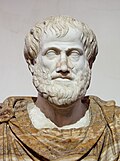Rule of inference
A rule of inference, inference rule, or transformation rule is a tool used in logic. A rule of inference can take one or more statements, called premises, and return some other statement, called a conclusion. For example, the rule of inference called modus ponens takes two premises, one in the form "If p then q" and another in the form "p", and returns the conclusion "q". The rule is valid with respect to the semantics of classical logic, in the sense that if the premises are true, then so is the conclusion.
Typically, a rule of inference preserves truth, a semantic property. In many-valued logic, it preserves a general designation. But a rule of inference's action is purely syntactic, and does not need to preserve any semantic property: any function from sets of formulae to formulae counts as a rule of inference. Usually only rules that are recursive are important; i.e. rules such that there is an effective procedure for determining whether any given formula is the conclusion of a given set of formulae according to the rule.
Popular rules of inference in propositional logic include modus ponens, modus tollens, and contraposition. First-order predicate logic uses rules of inference to deal with logical quantifiers.
Rule Of Inference Media
Modus ponens is one of the main rules of inference.
George Boole (1815–1864) made key contributions to symbolic logic in general and propositional logic in particular.
As one of the founding fathers of modern logic, Gottlob Frege (1848–1925) explored some of the foundational concepts of first-order logic.
The rules of inference in Aristotle's (384–322 BCE) logic have the form of syllogisms.



